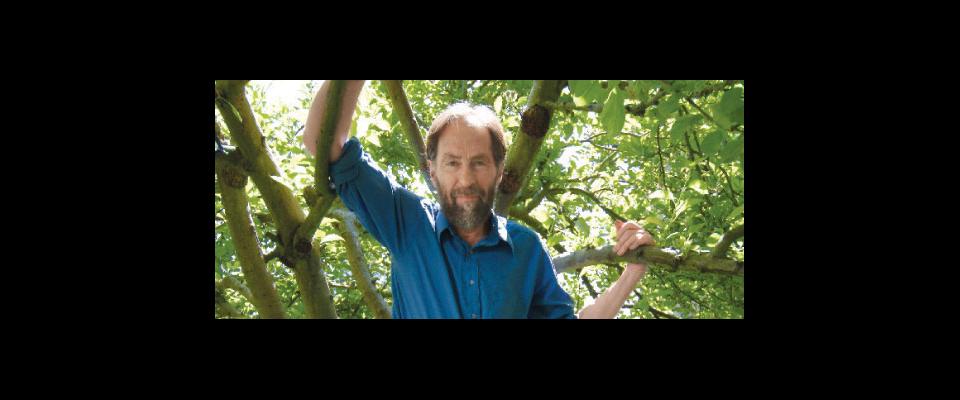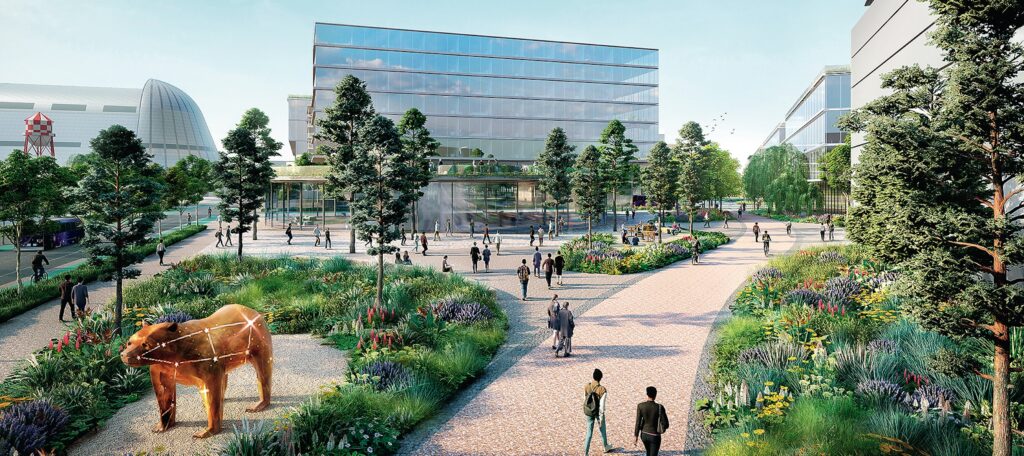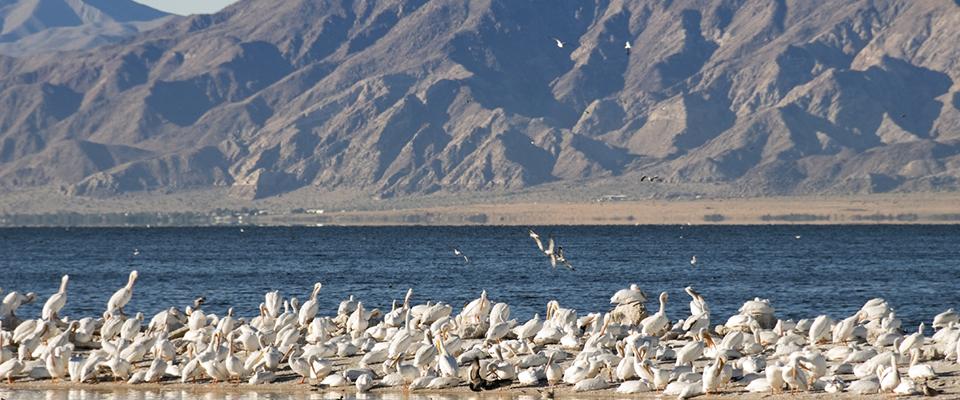By studying alpine lilies and sunflowers, Berkeley scientist John Harte has uncovered a serious flaw in climate change predictions.
In the end, after all the talk and worry and wringing of hands, if nothing is done it will look like this: In the Sierra, the snowpack will begin to melt earlier in the year, by March or April, and the streams that normally flow out of the mountains in the summer months—the streams that feed the rivers that feed the farms—will run dry in July, just as the crops thirst most for water. As it becomes hotter, the Central Valley and the San Joaquin Valley will parch and succumb more often to drought. The hills, too, will brown and the grasses will wither and brushfires will rage. And along the coast, the Pacific will begin a slow, inexorable rise. If it rises high enough, and topples the levees of the Sacramento Delta, saltwater will pour across fields and farmland and backyards. And if that happens, the sea will claim not just land but the drinking supply for millions of Californians and water for hundreds of thousands of acres of farms.
But all of that belongs to another time. Today it is cool and gray, a damp February afternoon, and low-slung clouds limn the Berkeley hills. On the south side of the Berkeley campus, on the third floor of Barrows Hall, an imposing modern building with an odd pagoda-like roof, John Harte sits behind a large wooden desk. His office is tucked among others in the Energy and Resources Group, an unusual interdisciplinary program at the university that studies energy, development, biological diversity, and climate change, among a host of other issues. For more than three decades, Harte has worked in this department and, since 1988, has devoted most of that time to the study of global warming. His office bears the evidence of years of research: Papers are piled on the desk, the file cabinets, the floor. The room suggests a lifetime of bookishness, but none of that is evident in Harte’s appearance. He’s a trim man, 66 years old, with a wiry physique and a slightly unkempt, graying beard. His sneakers are caked with a thin layer of mud and his eyes are framed by apostrophes of wrinkles, the product of years spent in the high-altitude summer sun.
Since 1990, Harte has been conducting climate change research in a subalpine meadow in Colorado, on the western slope of the Rockies. For 16 years, with the aid of dozens of heat lamps, he has been continuously warming a patch of earth, night and day, winter and summer. When it began, the project was one of the first attempts by anyone to mimic the effects of global warming on an ecosystem. Until Harte and his graduate students switched on the electricity in their meadow and began to slowly turn up the heat, few scientists had studied the ecological consequences of global warming. But by ignoring how, for instance, plant species respond to a warming earth, climate scientists missed a critical source of warming itself. They were looking at the sky to predict the future, but, as Harte surmised, what is happening on the ground is of nearly as much importance.
The changes that have taken place in his subalpine meadow suggest a harrowing truth: that our worst-case predictions for global warming, as bad as they are, may not be bad enough.
Harte is a thoughtful, serious man, and his words come soft and measured; in conversation, his eyes do most of the work. Depending on the subject, they hold a curious look, or one that is stern or playful or, as is the case right now, intense. He leans forward in his chair, uncrosses his arms, and begins talking about ice.
The Antarctic ice sheet comprises layers and layers of compressed snow and ice, to a depth of more than two miles. The layers, like the rings of a tree, represent different epochs of time; near the bottom of the sheet is ice that formed hundreds of thousands of years ago. Throughout the 1980s and 1990s, a group of scientists at an Antarctic research station called Vostok drilled deep into this surface, extracting an ice core more than 11,000 feet long. The core contains oxygen isotopes that can be analyzed to determine the earth’s temperature at various points in time; it also contains trapped air bubbles, which can be used to quantify levels of greenhouse gases, carbon dioxide (CO2) in particular. Together, the temperature and CO2 data from the Vostok core offer the best picture we have of the earth’s climate history over the past half-million years. The core confirmed much of what we already knew from glacial records: that over great stretches of time the earth’s climate has swung between eras of relative cold and hot. No fewer than four glacial periods were recorded in the Vostok core.
From his chair, Harte reaches for a book on a nearby shelf. He opens it to a page on which two graphs are printed side by side. One graph plots the Vostok temperature data over a period of hundreds of thousands of years. The other plots the CO2 data over the same time. “Do you see any similarities?” he asks. In fact, the two graphs look almost exactly alike—two jagged lines that rise and fall in near-perfect synchronicity, like outlines of the same serrated knife.
The graphs illustrate a widely accepted view that climate change is driven by increasing amounts of CO2 in the atmosphere. But what interests Harte is less the changing temperature than the regular surges in CO2. “What is the mechanism? Where is the carbon dioxide coming from?” Harte asks. “That is the mystery of Vostok.” In an age before humans, before carbon could be burned as fuel and released into the atmosphere, what would cause CO2 to rise so precipitously? Where was all that carbon coming from? The answer, at least in part, lies in Harte’s meadow in Colorado.
A number of things happened to the meadow as it warmed, but the most important thing was this: The flowers began to die.
Alpine meadows are full of leafy perennials such as the purple-flowered larkspur, yellow glacier lilies, and sunflowers. But in the changed climate of Harte’s heated plots, which were warmed by only 3.5 degrees Fahrenheit (a 1988 approximation of the warming that will occur by 2040), these flowers suffered. In time a new plant began to take over: sagebrush, a woody shrub more often associated with the arid plateaus of Colorado than with its peaks.
The heated meadow began to look different—more desertlike than pastoral—but the changes weren’t just aesthetic. Sagebrush is much less reflective than the flowers; where the light–colored flowers once reflected much of the sun’s energy back into space, sagebrush, with its dark bark, absorbed it. So as the sagebrush spread, the meadow began to grow even warmer.
The flowers had also served as an excellent carbon sink. They took CO2 out of the atmosphere and converted it through photosynthesis into leaves and petals and roots. During the short alpine summer, a succession of flowers would grow and die, and through decomposition that plant material would enter the soil, where microbes would eventually convert it back into carbon dioxide. In this way, the meadow maintained a carefully balanced carbon cycle, taking carbon out of the atmosphere and releasing it in equal measure.
Sagebrush, by comparison, is less active at photosynthesis and it produces far less plant material each year. As the sagebrush spread, Harte began to observe a disturbing trend: The carbon that was bound up in the soil continued to be released through the work of microbes, but now it was no longer being replaced. The fine balance of the meadow’s carbon cycle had been upended, and in the first five years of heating, fully two-thirds of a pound of carbon per square yard was lost—about as much as in a pint of gasoline. The meadow, once at carbon equilibrium, had become, in a few short years, a carbon emitter.
In the parlance of climate science, the phenomena at work in Harte’s meadow are known as “positive feedbacks.” A small increase in temperature leads to an increase of CO2, which in turn leads to even higher temperatures and yet more CO2. Warming begets warming. Harte and others now believe that such feedbacks are the likely engine of the carbon dioxide shifts recorded in the Vostok ice core. A subtle warming event—a slight increase in the sun’s energy due to a change in the earth’s orbit—served as the spark for climate change, but feedbacks did the rest.
It is hard to fathom that ecological changes could drive such massive climate shifts, but in fact the earth’s soils harbor four times as much easily releasable carbon as resides in the atmosphere, and the oceans contain nearly 50 times as much. “Release even a fraction of that,” Harte says, “and the effect would be enormous.” Warm one meadow and nothing much happens to the global climate, but warm ten thousand meadows—and forests and savannahs and swamps—and, well, look out.
As we talk in his office, Harte’s voice becomes increasingly animated and he interrupts himself several times and leaps from his chair to look for articles that will offer more detail on one point or another. He is plainly excited by questions of science, and even on a topic as grave as climate change a kind of breathless enthusiasm can overtake his words. At moments it seems possible to imagine that all of this is just an intellectual exercise. But then Harte brings me to his point.
The frightening thing, he says, is that, for lack of understanding, biological feedbacks like those in the meadow are not factored into our current global warming models. While the models anticipate increases in atmospheric carbon dioxide from future fossil fuel emissions and from some feedbacks like increased water vapor and lower ice reflectivity, they don’t account for the carbon that will be unleashed from the ground and the ocean as the world warms. If they did, Harte says, the upper-limit increase in global temperature by 2050 would not be 8 degrees Fahrenheit, as is currently projected, but closer to 12 degrees. “In other words,” Harte says, “we’re underestimating the magnitude of future warming.”
It is a startling assertion, and some climate scientists will undoubtedly take issue with Harte’s projections; despite a broad consensus in the scientific community that global warming is happening, temperature forecasting remains an area of considerable disagreement. But Harte has not pulled these numbers out of a hat; he’s based his projections on the data uncovered at Vostok, our best record of the climate’s past changes. Nor can he be dismissed as some wild-eyed radical. A highly regarded scientist, he’s served on six National Academy of Sciences committees and has published dozens of articles in top peer-reviewed journals.
If Harte is right, and our climate models are off by even a few degrees, the implications are serious. An extra warming of four degrees sounds insignificant; we would barely notice such a change in our day-to-day lives. But as a global average, even such a seemingly small increase would have far-reaching consequences. At the planetary level, a little warming goes a long way. At the depths of the last ice age, 20,000 years ago, when nearly a third of the earth was covered by ice, the average global temperature was just 12 degrees Fahrenheit cooler than it is today.
Harte was trained in theoretical physics and he speaks in the restrained language of science. He disavows talk of doomsday scenarios and climate change “tipping points.” The fact is, he says, we are in uncharted territory. By the middle of this century, under current emission levels, the earth likely will be warmer than at any time in the past 750,000 years and hold more carbon dioxide than it has in millions of years. We’re in an entirely new climate regime, Harte says, and we can hardly know what the future will bring.
Given his reluctance to speculate, I am surprised when, on a rainy evening in late March, he stands before a crowd at Berkeley and delivers remarks that are, by his cautionary standards, alarming.
The event is a symposium on global warming, with a panel of officials from the governments of Sweden, Norway, and the state of California. Throughout the discussion, the audience of a hundred or so seems restless—the speeches are encumbered by thick accents and acronyms and PowerPoint presentations—and the auditorium echoes with impatient coughs and squeaking seats.
Harte, who has been invited to respond to the panel’s remarks, takes the stage last. At the podium, in a white sports jacket and wearing a belt buckle emblazoned with spinning planets, he stands too close to the microphone and so at first his voice, deep and resonant, overwhelms the room.
He takes issue, he says, with some of the projections stated by the panelists. He thinks the numbers are too optimistic. “The problem is more difficult than we thought,” he says. “We’re beginning to see an accelerating amount of greenhouse gas in the atmosphere, above and beyond what you’d predict from fossil fuel burning.” This acceleration, he says, is due to feedbacks that are only just beginning to take effect.
“This is very worrisome,” he says. “It will speed up the melting of Greenland ice. If the entire Greenland ice sheet melts out, which it could in 100 or 150 years, we’d see a 25-foot rise in sea level. And with the melting of this ice, Greenland, which today is white and shiny and therefore reflects sunlight, will become dark brown, the color of the soil under the ice, and it will absorb sunlight and further accelerate the warming. What I need to emphasize is that these accelerating effects are not in our current climate models. If they were, we would be even more scared than we are today. And we should be more scared.”
At this, he pauses. A hush has descended upon the crowd and it is possible, in the quiet, to hear the hum of the lights overhead. When Harte begins to speak again, the auditorium fills with a low rush of murmur—whispered voices trying to make sense of what has just been said.
On a bright sunday morning at the end of March, I drive with Harte and his wife, Mel, to Limantour Beach in the Point Reyes National Seashore, an hour north of San Francisco. It’s a remarkably beautiful spot, with high crumbling cliffs and a long curving stretch of sand. The Hartes hike here once a month. When we arrive, the beach is cold and blustery, and the wind breaks the tops of waves, streaking the sea with white.
The three of us walk together along the beach until Mel stops to take a photograph, and then Harte and I continue. We begin to talk once more about his research, about the meadow project and similar climate change work undertaken elsewhere by some of his students, in the Marin headlands and in the Sierra foothills. After a time he stops and points to a distant spot in the ocean. “Twenty thousand years ago the edge of the sea was out there, more than 300 feet lower than it is today. By the end of this century, if Greenland melts, it will be 20 or 25 feet higher than where we’re standing now.” He turns and points to the cliffs behind us. “Those will be almost entirely underwater.”
The specter of rapid sea level rise has only recently gained traction in scientific circles. For years, it was assumed that a several-meter rise in ocean levels could happen only over thousands of years. But this is the second time that Harte raises the subject in my presence, and I press him to explain. “If Greenland goes, that is a disaster. The world is going to face problems that just aren’t…” His voice trails off, and then returns. “Mass migration of people. Half of Florida gone. Coastal infrastructure up and down both coasts gone. It’s unimaginable,” he says. “We’ve just got to prevent it.”
As he speaks, Harte for once begins to look his age. His face, caught in the shadows of the cliffs, is crisscrossed with wrinkles. The wind is hard against my ears and because of that, or perhaps because he turns his face from mine, I find it hard to read his tone. So I cannot say if his last words held hope or resignation.
Peter Alsop, a freelance writer, lives in Berkeley.
From the September October 2006 Global Warning issue of California.






















